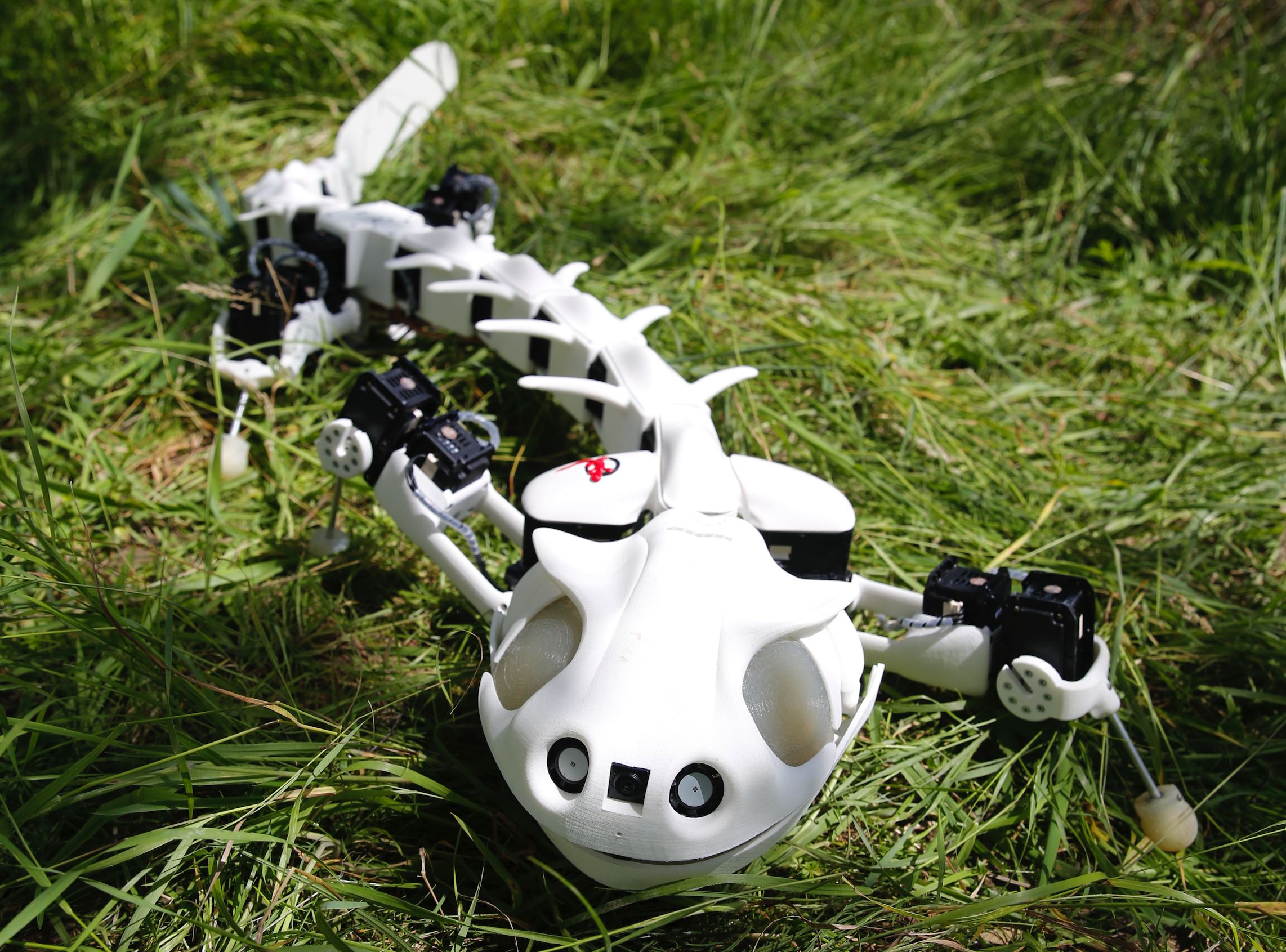We often imagine robots as the peak of mechanical complexity : mysterious machines with mechanisms that only experts can understand. Actually, for bioroboticists, it’s quite the opposite: robots are the tools, and the truly advanced mechanisms are found in nature, especially in animal motion. That’s why nature is the greatest source of inspiration for creating more high-performing, adaptable, and energy-efficient robots.
Pleurobot was created with this exact philosophy in mind. Inspired by the salamander Pleurodeles waltl, which can walk, crawl, and swim, Pleurobot mimics all these abilities. It’s an amphibious robot, which is pretty unique, using both its limbs and tail to travel on land and through water. It was developed and is currently improved by the BIOROB Lab team with whom I'm spending my summer.

For my research, I am trying to design new feet for Pleurobot. It can seem anecdotal and you might be wondering: how can I spend eight weeks on four feet ! But I can assure you, it is not as trivial as it seems : the feet have the particularity to be fully passive, which means they are not directly stimulated by a motor or controlled by an electronic system, although they must be compliant so that they can adapt to different terrains while staying stiff enough to assure a good propulsion. These functions are only partially filled with the current "ball-feet" design, which is why I am trying to improve it.
My approach was to first watch a lot of documentaries about salamanders, observing how their feet adapt to the ground and move at each step. I then decided to develop a first paw design and added a passive ankle mechanism. With 3D printing, I can quickly build prototypes and test them instead of loosing a lot of time on simulations. That's the magic of robotics : rapid prototyping often beats complex calculations, which certainly saves me some time 😉. At each iteration, my design improves and I hope that by the end of my internship, it will be good enough to truly increase Pleurobot 's performance.
Thank you for reading my mid-research report and feel free to reach out if you have any question about my work or if you have some good ideas to walk like a salamander ! 🦎
Image source : BIOROB Lab EPFL